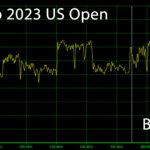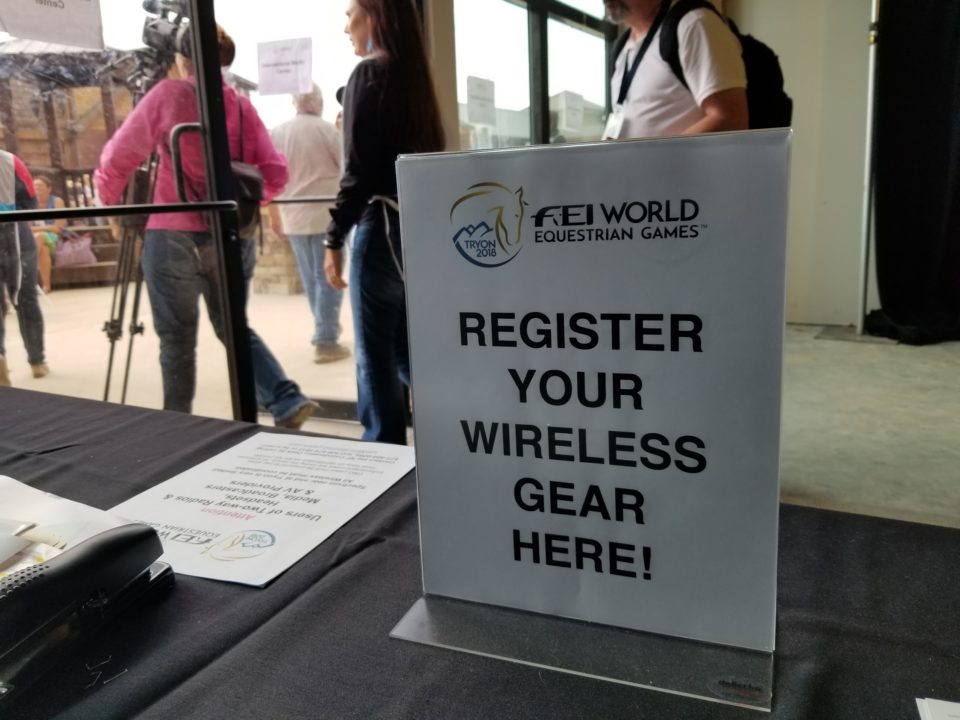
TVN Tech | At 2020 Conventions, Less Spectrum For TV
December 6, 2019
2023 US Open at Los Angeles Country Club a Frequency Nightmare
June 18, 2023In the realm of professional golf, the smooth execution of a PGA Championship relies not only on the golfers’ skills but also on behind-the-scenes operations. One crucial aspect often overlooked is the strategic management of radio frequencies. From ensuring smooth communication among tournament officials to enabling live broadcasts and enhancing the spectator experience, radio frequencies play a pivotal role in the success of a PGA Championship. We’ll explore the use and management of radio frequencies at a PGA Championship and delve into the various applications and challenges associated with this vital technology managed and directed by the team from Broad Comm.
Although months of advance coordination and research take place, conflicts happen. One such conflict was discovered on the arrival of the blimp. Broadcasting on an assigned frequency, the blimp shutdown the communications systems of an uncoordinated federal agency which will remain unnamed. Quick response from the RF Team moved the blimp to a secondary frequency for the remainder of the event.

Not only are frequency-on-frequency conflicts potential problems, malfunctioning transmitters can reck havoc on wireless users. One such conflict was a device being used as a talent IFB broadcasting an extremely wide signal with spurs that interfered with nearby camera telemetry channels. The Broad Comm RF team was able to locate the offending device and issue corrective measures.
Communication and Coordination: At a PGA Championship, effective communication is essential for the seamless coordination of various stakeholders, including tournament officials, broadcasters, security personnel, and emergency services. Radio frequencies serve as the backbone for this crucial aspect of event management. Everyone from the officials to the grounds keepers use two-way radios and wireless communication systems to relay important information, such as tee times, score updates, weather alerts, and security notifications. By ensuring clear and reliable communication, radio frequencies contribute to the overall efficiency and safety of the event.
Broadcasts and Media Coverage: A PGA Championship attracts millions of viewers worldwide, and radio frequencies are indispensable for live broadcasts and media coverage. Television networks, radio stations, and online streaming platforms rely on dedicated frequencies to transmit the excitement and drama of the tournament to audiences around the globe. Although miles of fiber cable is run throughout the course, over 40 wireless cameras and dozens of high power wireless microphones are used by the host broadcaster. Efficient frequency management is crucial to prevent interference, ensuring high-quality transmission and an immersive viewer experience. Well over 1,000 frequencies are coordinated by the Broad Comm team to make it all work.

Spectator Experience: For on-site spectators, radio frequencies play a significant role in enhancing their experience. Wireless technology enables the provision of live audio commentary, allowing spectators to follow the action on their handheld radios or through mobile applications. Effective frequency management ensures that these systems operate smoothly without interference, optimizing the overall spectator experience.
Managing radio frequencies at a PGA Championship entails its hardships. With the explosion of wireless devices such as cellphones, tablets and devices worn on the body, frequency usage has escalated immensely, leaving room for congestion and disruption. To circumvent this situation, careful preparation, frequency coordination and advanced technology must be implemented. The Broad Comm team uses highly specialized equipment to “see” the overall RF Spectrum being used at all times on and around the property, making sure only authorized frequencies are in play.
Planned and allocated frequencies for a variety of applications, including public safety resources, Broad Comm collaborates with regulatory authorities and major stakeholders. As a result, appropriate frequency spectrum allocation ensures smooth operations and minimizes interference risks. It involves assessing the specific requirements of communication systems, broadcasting equipment, and spectator services.
In order to avoid interference and ensure uninterrupted communication, it is vital to coordinate frequencies among different stakeholders. It is Broad Comm’s responsibility to assign non-interfering frequencies for the operations of broadcasters, security teams, law enforcement, and other parties. With frequency coordination software and real-time monitoring systems, potential issues can be quickly adjusted and mitigated.
In order to maintain the integrity of radio frequencies during a PGA Championship, spectrum monitoring and enforcement measures are used. For the benefit of rights holders and visiting media, frequency coordinators are available in the media center to assist them.
The use and management of radio frequencies are vital elements in the success of a PGA Championship. From enabling seamless communication and coordination to enhancing player-caddy interactions, providing an immersive and safe spectator experience, and facilitating global media coverage, radio frequencies play an integral role in every aspect of the event. With Broad Comm’s expertise, the PGA effectively harnesses the power of these frequencies and managing potential interference, the PGA ensures that the tournament runs smoothly, leaving a lasting impression on players, caddies, workers, media and spectators.






